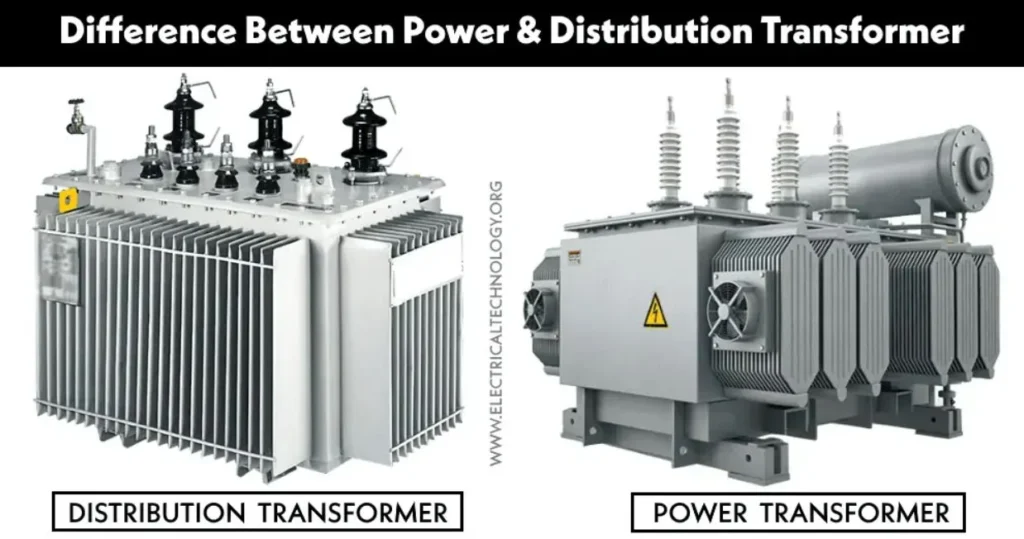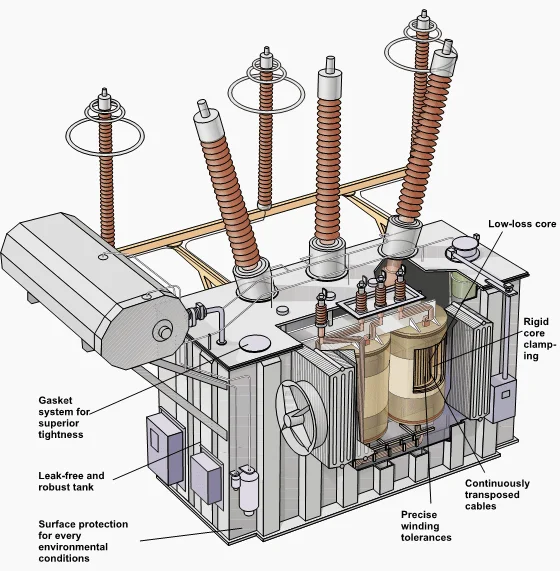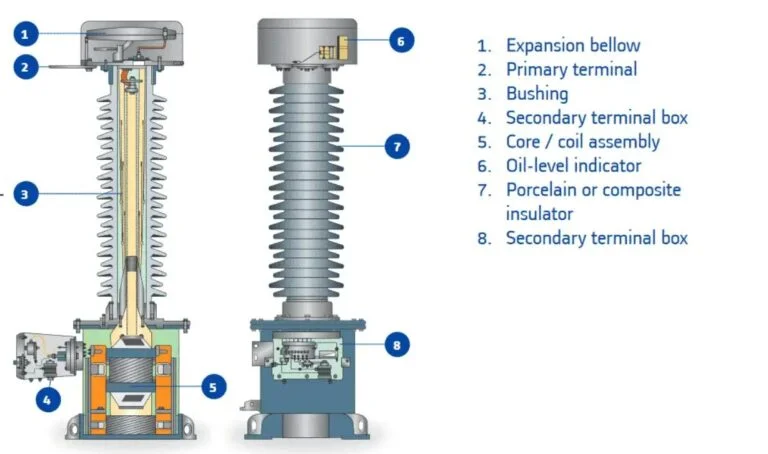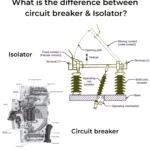Difference between Instrument Transformer and Power Transformer

Lesson This article describes the main differences between instrument transformers and power transformers. Transformer is an electrical device used to increase or decrease voltage. The transformer does not change the power and frequency. These two parameters do not change when the transformer increases or decreases the voltage.
A transformer has a magnetic core, on which two windings are wound called primary and secondary. a voltage or current level to a desired value. These two coils are insulated from each other but magnetically coupled.
When we apply AC power to the primary coil, it produces a variable flux. The magnetic flux passes through the core and is coupled to the primary and secondary windings. The variable flux associated with the primary and secondary coils produces EMFs.The EMF induced in the secondary depends on the transformation ratio of the transformer.
The following types of transformers are widely used depending on the application requirements.
Power transformer
Distribution transformer
Instrument transformer
Let’s first take a look at what power transformers and instrument transformers are.
What is a power transformer?

Power Transformers are essentially large power transformers used in high voltage applications.They are often installed at power plants to increase voltage to transmit high voltage over long distances. At the front desk. Power transformer reduces voltage according to user requirements.
Therefore, based on voltage rise/fall, power transformers are of two types. The step-up transformer increases the voltage, while the step-up transformer decreases the voltage.Transformers are usually delta-connected primary and secondary windings, since no neutral is required in high-voltage transmission.
What is an instrument transformer?

As the name implies, a measurement transformer is connected to a measuring device or protective device. Instrument transformers are used to measure electrical quanta such as current and voltage. Direct measurement of electrical quantities over high voltage with conventional instruments such as ammeters and voltmeters is not possible and we must install current transformers and transformers to lower the current and voltage respectively. .
Current transformers reduce the current of the transmission line to a measurable value. It can also be called a step-up transformer because it increases the voltage in the secondary in proportion to the decrease in current. The secondary of the current transformer must not be open-circuited because high voltage in the secondary can damage the CT. The secondary of CT should always be closed circuit.
A voltage transformer is a measurement transformer that reduces line voltage to a measurable value.A transformer is a low voltage transformer, it has more primary turns and fewer secondary turns. The conversion ratio of a voltage transformer (N1/N2) is greater than 1.
Difference Between Power Transformer and Instrument Transformer
The main differences between power transformer and instrument transformer are listed in the table below.
| The basis of the difference | Power transformers | Instrument transformers |
| Description | A power transformer is a transformer with a high kVA rating and is used to vary voltage levels for power transmission. | A measurement transformer is a transformer designed to reduce the voltage or current level of a transmission line for measurement and protection purposes. |
| Purpose | Power transformers are mainly used to change line voltage levels in power systems. | Measurement transformers are mainly used to extend the range of measuring equipment so that they can measure high voltage, current, power, etc. |
| Power handling capacity | Power transformers can handle large amounts of power. | Instrument transformers can handle very little power. |
| Function | The transformer increases and decreases the voltage of the transmission line. | Measurement transformers that reduce voltage or current to a safer and easier to measure value to power devices such as ammeters, voltmeters, protective relays, and more. |
| Heating | Since the transformer handles a large amount of energy, the heat output is also greater. | In instrument transformers, much less heat is generated. |
| Cooling requirement | Heat generated in transformer is higher. Therefore, they require additional cooling devices. | The temperature rise of the measurement transformer is not critical. As such, natural cooling is sufficient. |
| Storage tank | Storage tank is an important part of power transformer. | Measurement transformer without reserve tank. |
| Load limiting factor | In the case of power transformers, temperature rise is the main factor to limit the load. | In instrument transformers, accuracy is the main limiting factor of the load. |
| Design Considerations | For power transformers, cost, efficiency and voltage regulation are the main design considerations. | Accuracy and cost are the main design considerations for instrument transformers. |
| Cost | Transformer cost is very high. | Instrument transformers are much cheaper than power transformers. |
| Example | Examples of power transformers: generating station transformers, receiving substation transformers, substation transformers, etc. | Current transformers and voltage transformers are two major examples of instrument transformers. |






